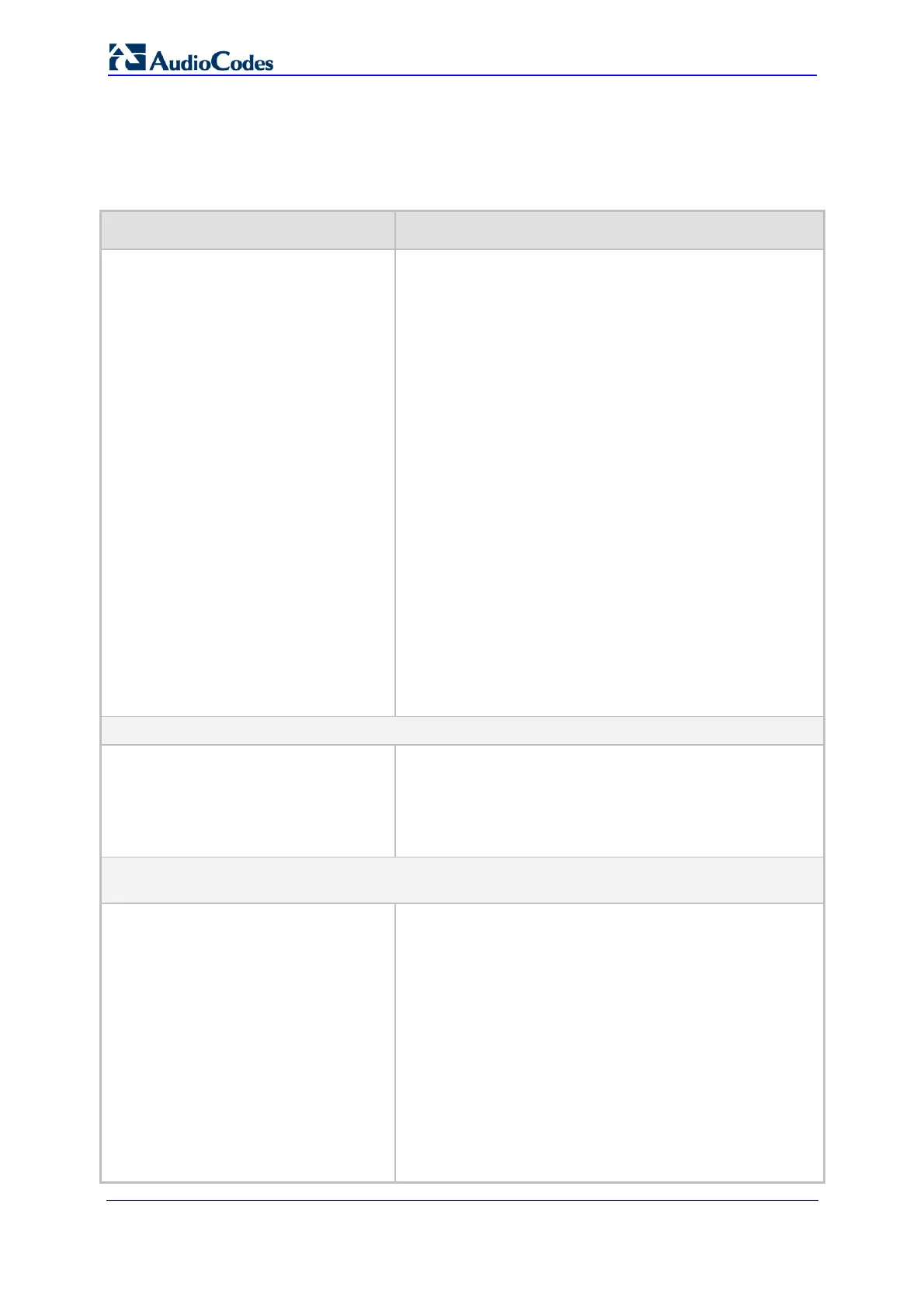SIP User's Manual 418 Document #: LTRT-12801
MP-500 MSBG
6.15.3 Number Manipulation Parameters
The number manipulation parameters are described in the table below.
Table 6-52: Number Manipulation Parameters
Parameter Description
Web: Copy Destination Number to
Redirect Number
EMS: Copy Dest to Redirect Number
[CopyDest2RedirectNumber]
Determines whether the device copies the called number
to the outgoing SIP Diversion header for Tel-to-IP calls.
Therefore, the called number is used as a redirect number.
Call redirection information is typically used for Unified
Messaging and voice mail services to identify the recipient
of a message.
[0] Don't copy = Disable (default).
[1] Copy after phone number manipulation = Copies the
called number after manipulation. The device first
performs Tel-to-IP destination phone number
manipulation (i.e., on the SIP To header), and only then
copies the manipulated called number to the SIP
Diversion header for the Tel-to-IP call. Therefore, with
this option the called and redirected numbers are
identical.
[2] Copy before phone number manipulation = Copies
the called number before manipulation. The device first
copies the original called number to the SIP Diversion
header, and then performs Tel-to-IP destination phone
number manipulation. Therefore, this allows you to have
different numbers for the called (i.e., SIP To header)
and redirected (i.e., SIP Diversion header) numbers.
Note: This parameter can also be configured for IP Profiles
(using the parameter IPProfile).
Phone-Context Parameters
Web/EMS: Add Phone Context As
Prefix
[AddPhoneContextAsPrefix]
Determines whether the received Phone-Context
parameter is added as a prefix to the outgoing Called and
Calling numbers.
[0] Disable = Disable (default).
[1] Enable = Enable.
Web: Phone Context Table
EMS: SIP Manipulations > Phone Context
[PhoneContext]
This ini file table parameter defines the Phone Context
table. This parameter maps NPI and TON to the SIP
Phone-Context parameter. When a call is received from
the Tel, the NPI and TON are compared against the table
and the Phone-Context value is used in the outgoing SIP
INVITE message. The same mapping occurs when an
INVITE with a Phone-Context attribute is received. The
Phone-Context parameter appears in the standard SIP
headers where a phone number is used (Request-URI, To,
From, Diversion). The format for this parameter is as
follows:
[PhoneContext]
FORMAT PhoneContext_Index = PhoneContext_Npi,
PhoneContext_Ton, PhoneContext_Context;
[\PhoneContext]

